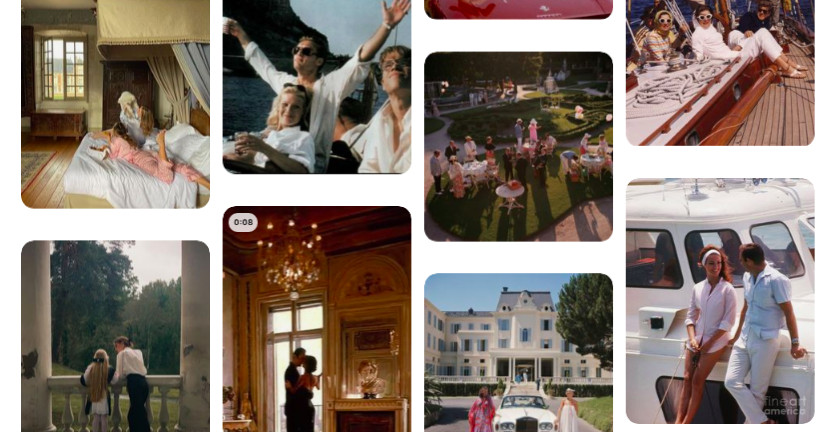
From seventh grade to sophomore year in high school, my outfit on the first day of school was almost always the same: a denim miniskirt that barely abided by the “must reach the end of your fingertips” rule, ballet flats, a string of pearls, and an Abercrombie polo. It was the mid-2000s, and this was what I understood to be the pinnacle of cool.
I think of this genre of outfit often, not because it looked particularly good but because arguably the biggest fashion trend of the moment is Y2K, or a modern take on the bright, busy, bubblegum styles of the early 2000s, which themselves were inflected with ’70s psychedelia and overt sexiness. This style is sometimes affectionately referred to as “trashion.” It stands in opposition to the aesthetic that I’d argue played a more defining role during the actual 2000s, at least for other middle-class white girls in New England: prep.
No one really uses that word much anymore, but over the past several years, I’ve started to see its descendants creep up on TikTok, Pinterest, and Instagram. Lithe white people in khaki pants and oxford shirts lounging on a sailboat; tweed blazers inside an Ivy League library; tennis skirts and croquet in front of someone’s summer home; Blair Waldorf and The Talented Mr. Ripley. It goes by different monikers online, sometimes categorized as dark academia (or light academia if it’s a picture of a sunny setting), the WASP look, or the socialite lifestyle, but the descriptor I’m seeing most often is “old money aesthetic.”
It’s sort of a hilariously on-the-nose name; “old money” gets right to the point of what all fashion trends ultimately are, which are displays of conspicuous consumption.Yet it seems to be arriving right on time, as a counterweight and companion to the loud, whimsical design associated with Gen Z and the name brand-heavy “California rich” look the Kardashians made inescapable.
While GQ predicted the preppy comeback in 2018, it was referring to menswear brands incorporating prep with streetwear in a semi-ironic nod. That’s not what #oldmoneyaesthetic images and videos are lusting over: They want the unapologetically pretentious Ivy League-slash-Oxbridge fourth-cousin-of-a-Kennedy country club vibe. They want to name their children things like “Prosper” and “Montgomery,” according to the many old money baby name TikToks that exist. “WHY BE LA RICH WHEN YOU CAN BE THIS RICH?” reads a comment under one such video (although the fact that many of them are soundtracked to Lana Del Rey adds an extra layer of absurdity).
What’s different this time around, as opposed to the years in which I kept several Abercrombie shopping bags thumbtacked to the inside of my closet as some sort of deranged shrine, is that there are people who are providing context about the less Pinterest-friendly history of prep and entrenched wealth on the very same platforms where it’s spreading. It’s not that no one noticed how racist and classist the Abercrombie aesthetic (remember its awful “look policy”?) was at the time, but the critique just wasn’t necessarily reaching its target audiences of teenagers who were obsessed with the brand. Social media has helped change that: On TikTok, for example, the popular history and film account @deadhollywood made a recent video about how actually the trappings of the leisure class are “the peak of white supremacist fashion, not rednecks and camo.”
“This style is the absence of flesh, the absence of Blackness, the absence of extravagance. And that’s why it’s so goddamn boring,” she explains. “It particularly relies on white women’s thinness and gentility and elegance in contrast with the fleshy, maternal, nonsexual but overly sexual body of the Black woman.” The same sorts of discussions are happening in regard to, say, minimalism’s slightly fascist influences and Coco Chanel’s relationship with the Nazis. While the greatest indictment of 2000s prep came from places like Curtis Sittenfeld’s novel of the same name, in which the protagonist comes to realize the emptiness of East Coast boarding school hierarchies, this time the backlash is much more direct.
Prep has always been inherently conservative, though plenty of young, progressive people of color and queer folks are embracing its 2021 iteration online. Ana Quiring argued in the LA Review of Books earlier this year that an aesthetic like dark academia “de-exceptionalizes elite scholastic environments as much as it romanticizes them,” arguing against the cynical view that the visual subculture glamorizes photos of books and libraries rather than the actual books themselves, or that yearning for the old money lifestyle only serves to revere the upper classes.
More than that, though, the old money aesthetic seems to me like a pendulum swing against the omnipresent displays of wealth in society today, much like the way prep was both a backlash to and an incorporation of “trashion” in the 2000s. Billionaires and influencers, both emblematic of “new money,” are setting the standards and expectations for what counts as a worthy lifestyle, while old institutions like royalty and high society are buckling under the weight of social and economic change (see also: society New Yorkers complaining that the Met Gala has too many influencers and wealthy Hamptons residents resenting their even wealthier new neighbors). The new upper classes don’t seem to care about good taste or even clothing itself. Note to the tech bros: If you want to secure your place in cultural history, maybe start dressing better.
This column first published in The Goods newsletter. Sign up here so you don’t miss the next one, plus get newsletter exclusives.
source https://www.vox.com/the-goods/22638568/old-money-aesthetic-dark-academia-prep-tiktok-pinterest-instagram

Post a Comment